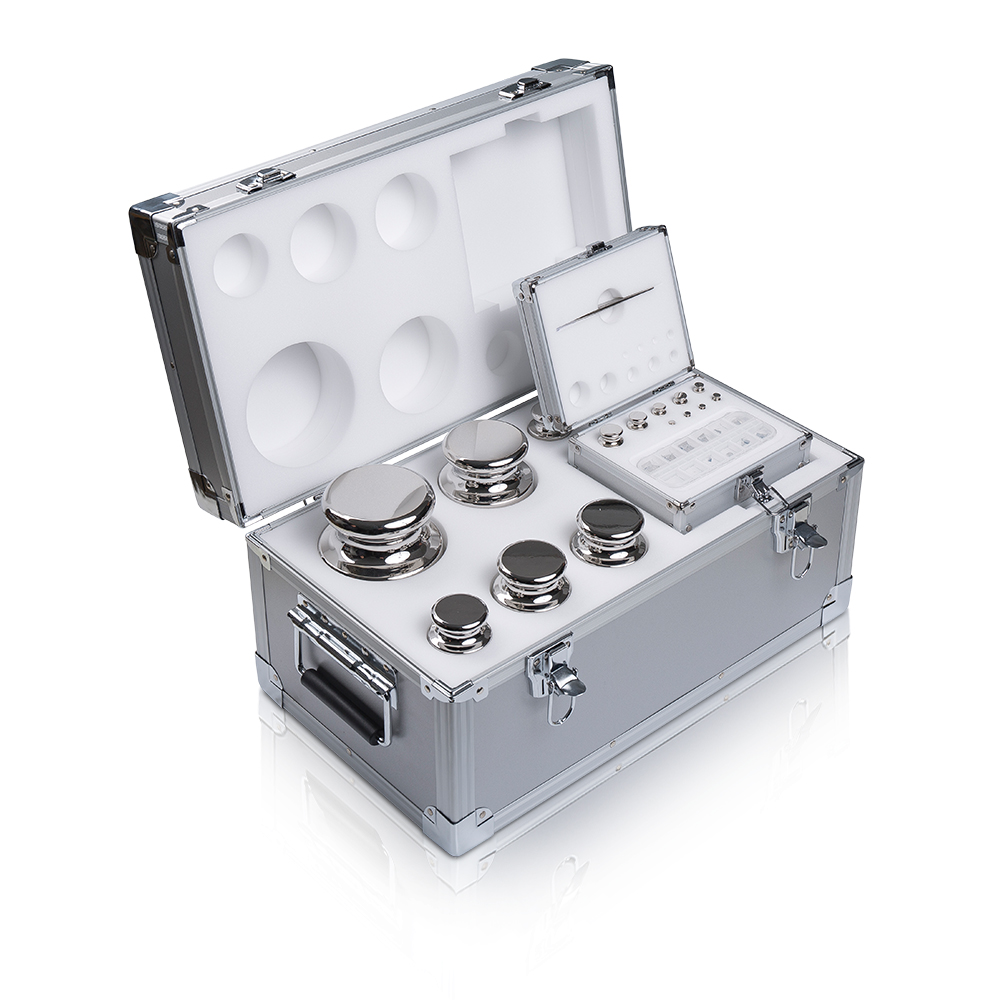The materials used in laboratory calibration weights are crucial in minimizing external influences such as temperature variations, humidity, magnetism, and contamination. These factors can significantly affect the accuracy and reliability of the weights. Here's a detailed look at how specific materials and their properties help mitigate these influences:
Temperature Stability
Materials Used: Stainless steel, aluminum, platinum-iridium, and other low thermal expansion alloys.
Properties and Mechanisms:
Low Thermal Expansion: Materials like stainless steel and platinum-iridium have low coefficients of thermal expansion. This property ensures that the dimensions and mass of the weights remain stable even with temperature fluctuations.
Thermal Conductivity: High thermal conductivity helps in quickly distributing temperature changes across the weight, reducing localized expansion or contraction.
Impact:
Minimized Mass Variation: Stability against temperature changes prevents the weight from gaining or losing mass due to expansion or contraction, maintaining accurate calibration.
Humidity Resistance
Materials Used: Stainless steel, ceramic, glass.
Properties and Mechanisms:
Corrosion Resistance: Stainless steel and ceramics are resistant to corrosion and oxidation caused by moisture. This property prevents the surface from reacting with humidity, which could alter the mass and surface characteristics.
Non-Hygroscopic: Materials like glass and certain ceramics do not absorb moisture, ensuring the mass remains constant regardless of ambient humidity levels.
Impact:
Stable Mass Under Humidity Changes: Resistance to corrosion and non-hygroscopic properties maintain the weights' mass and surface integrity, preventing deviations due to moisture absorption.
Magnetic Properties
Materials Used: Non-magnetic stainless steel, aluminum, and platinum-iridium alloys.
Properties and Mechanisms:
Non-Magnetic: Materials chosen for calibration weights are often non-magnetic, meaning they do not respond to external magnetic fields. This prevents the weights from being influenced by nearby magnetic sources, which could affect their mass reading.
Shielding: In some cases, weights are designed with materials that can shield against magnetic interference, ensuring stable mass measurement in environments with fluctuating magnetic fields.
Impact:
Unaffected by Magnetic Fields: Non-magnetic properties ensure the weights remain stable and accurate in environments with magnetic equipment or fields, preventing measurement errors.

Chemical Inertness
Materials Used: Stainless steel, platinum-iridium, certain ceramics.
Properties and Mechanisms:
Inert to Common Chemicals: Materials like platinum-iridium and high-grade stainless steel are chemically inert, meaning they do not react with common laboratory chemicals or environmental pollutants. This property helps maintain the weights' integrity and accuracy.
Protective Coatings: Some weights are coated with inert materials that provide an additional layer of protection against chemical interactions and surface contamination.
Impact:
Long-Term Stability: Chemical inertness ensures the weights do not corrode or degrade over time due to exposure to chemicals or pollutants, maintaining consistent mass.
Surface Finish and Contamination Resistance
Materials Used: Stainless steel, glass, ceramic.
Properties and Mechanisms:
Smooth Surface Finish: High-quality weights are polished to a smooth finish to minimize the surface area that can trap dust, dirt, or other contaminants. A smooth surface reduces the likelihood of contamination that could affect the mass.
Resistance to Adhering Particles: Non-porous materials like glass and ceramics are resistant to particle adhesion, helping keep the surface clean and free of contaminants.
Impact:
Minimized Contamination: Smooth, non-porous surfaces prevent contamination from affecting the weight, maintaining accuracy and reducing the need for frequent cleaning or recalibration.
Mechanical Stability
Materials Used: High-grade stainless steel, tungsten carbide.
Properties and Mechanisms:
High Hardness and Durability: Materials like tungsten carbide and high-grade stainless steel are exceptionally hard and durable. They resist wear, scratching, and deformation, which can alter the weight.
Resistance to Mechanical Stress: These materials can withstand mechanical stress without changing their physical properties, ensuring long-term stability.
Impact:
Consistent Performance: Durability and mechanical stability ensure that the weights maintain their shape and mass over extended periods and under various conditions, preserving their accuracy.
The selection of materials for laboratory calibration weights is critical in ensuring their stability and accuracy. By using materials that exhibit low thermal expansion, resistance to humidity and corrosion, non-magnetic properties, chemical inertness, smooth surface finishes, and high mechanical stability, calibration weights can maintain their mass and integrity under a wide range of external influences. This stability is essential for accurate and reliable measurements in precision laboratory applications.

 English
English















